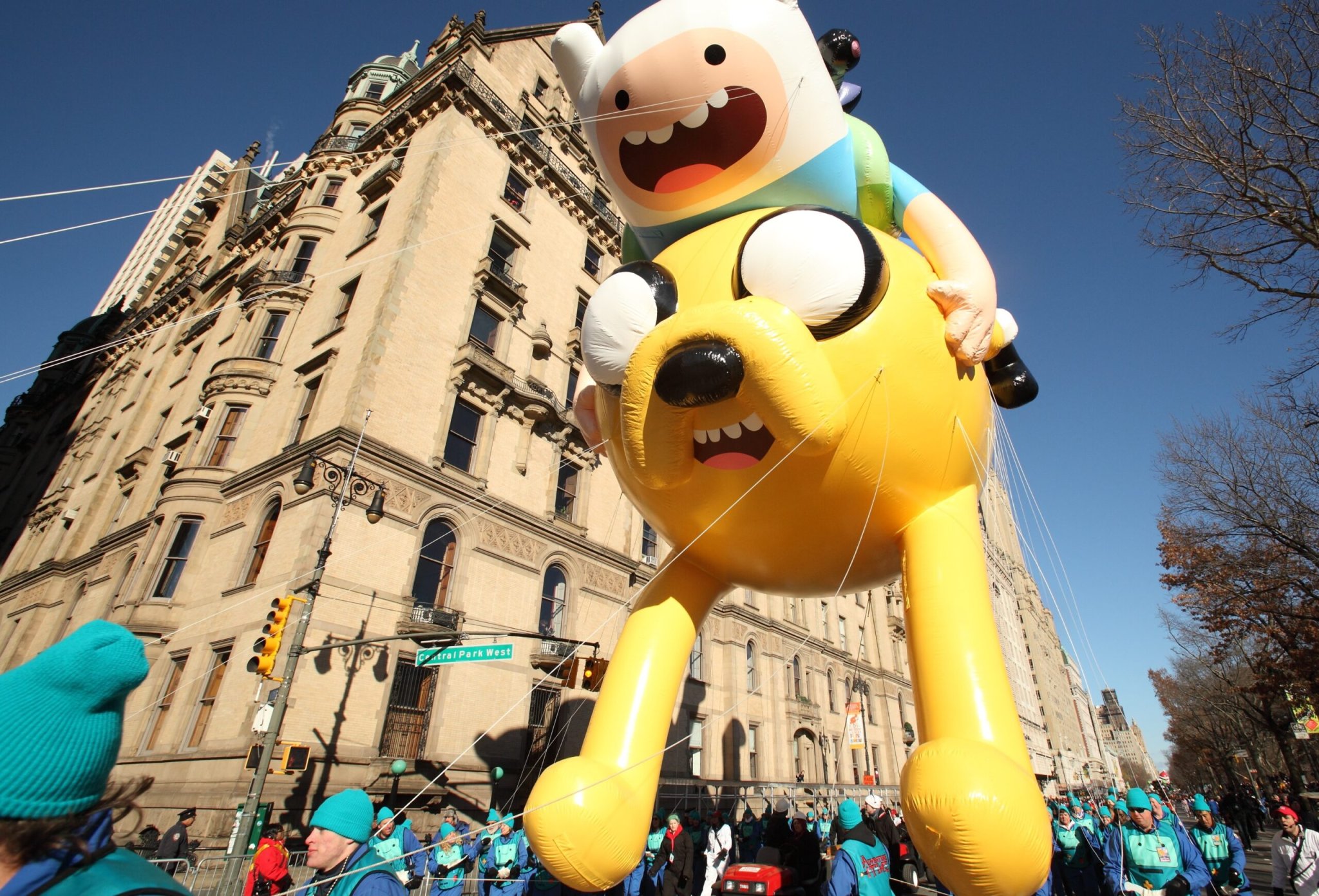

They’re cute and fat and take real engineering to get up into the air. I’m talking about the iconic balloons in Macy’s Thanksgiving Day Parade, which starts at 9:00 a.m. ET Thursday.
Just one group of 28 full-time workers, the Macy’s Parade Studio in New Jersey, conceives of, makes, and maintains all of the parade’s balloons. This week, the American Chemistry Council reported on some of the engineering—and the elbow grease—that goes into lofting the giant inflatables. Some highlights:
When staffers come up with a new design for a balloon, they first mold it in clay. Then, to help them calculate how much helium it would take to fill the design, they use good old water displacement.
The average balloon requires 12,000 cubic feet of helium. That’s enough to fill about 2,500 bathtubs.
The average balloon requires 90 handlers during the parade. Handlers must weigh at least 120 pounds and have no heart, back, or knee problems.
The balloons were originally made of rubber. Now, they’re made of fabrics coated in a polyurethane material that’s flexible, durable, and leak-resistant. Polyurethanes are synthetic plastic materials that also commonly show up in couch cushions, insulation, and even in synthetic-fiber clothes.
Back in 2011, Science Friday visited the warehouse in New Jersey where Macy’s balloons are made. Science Friday also explained some of the math behind lofting giant balloons. Have a look:

Happy Thanksgiving, from Popular Science.
Updated December 3, 2014: This post previously cited the American Chemical Society when it should have been the American Chemistry Council. I’m sorry for the error.
